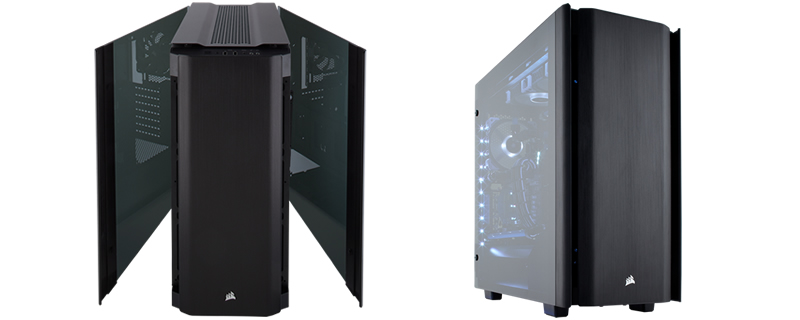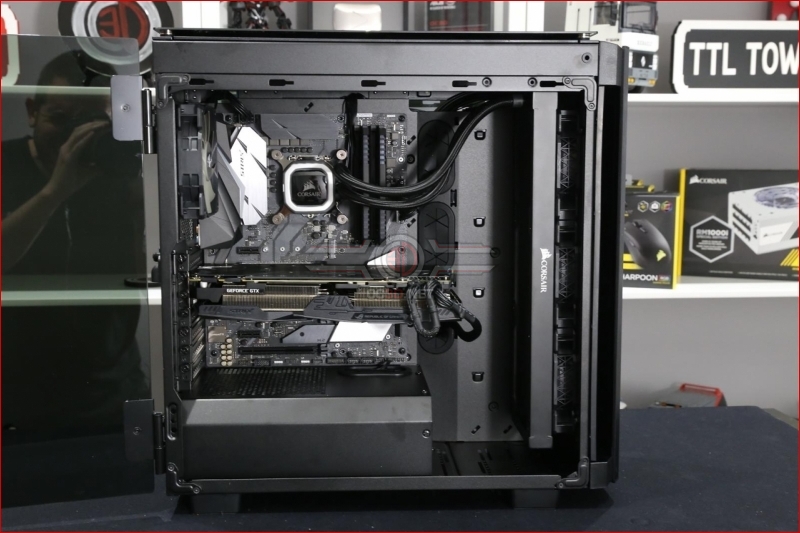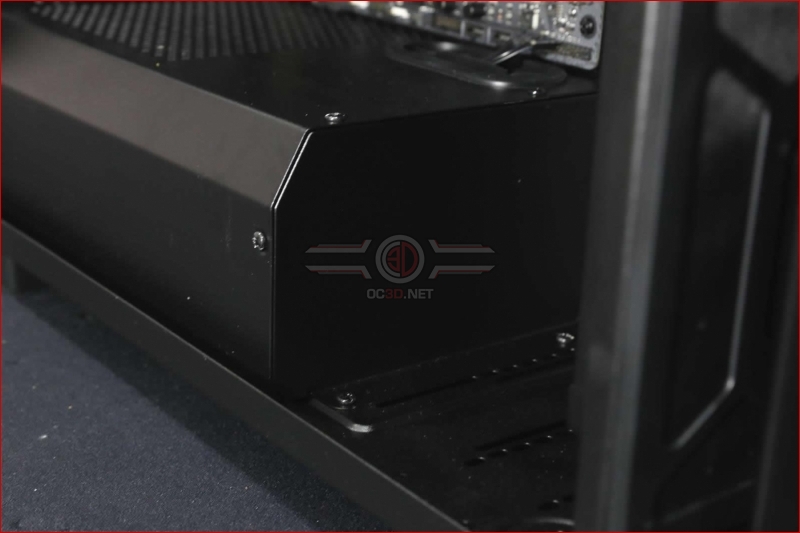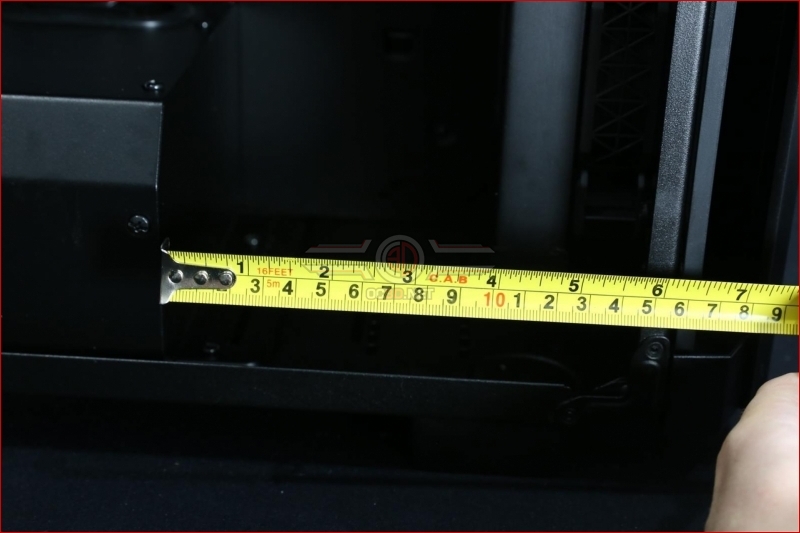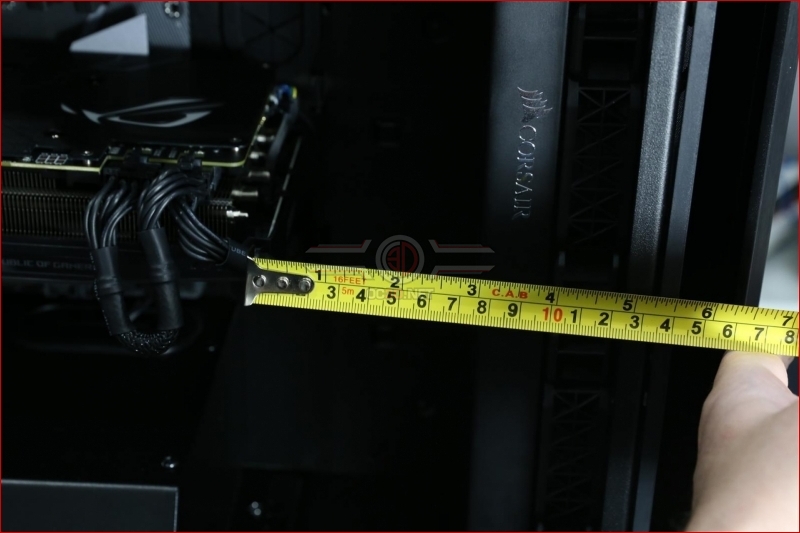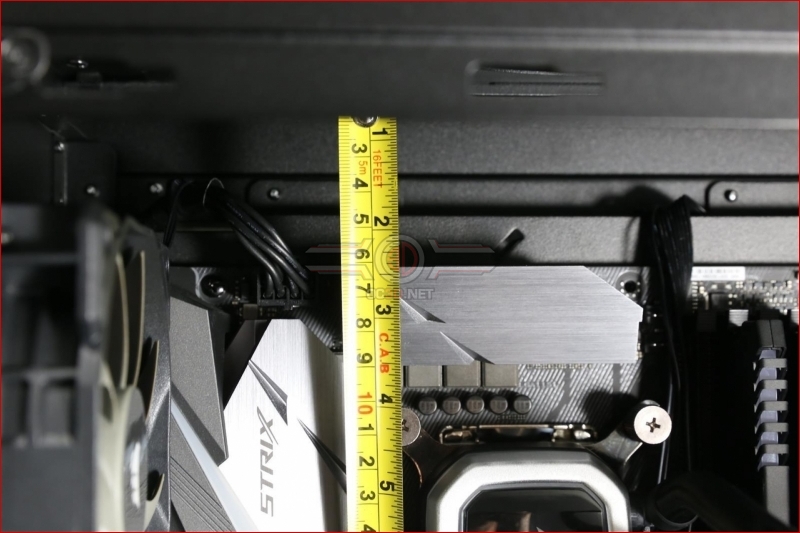Corsair Obsidian 500D Review
First Glance – Fans, clearances and drive bays
What the Obsidian 500D offers is an internal layout that is strikingly similar to Corsair’s existing 570X, providing an identical PSU shroud, support for vertically mounted GPUs and plenty of rooms for large CPU coolers, radiators, graphics cards and more.Â
The 500D is the first retail case where Corsair has included hinged tempered glass windows, coming with a smoked effect to obscure your internal components and allow your system’s lighting to have a greater impact on the visibility of internal components.Â
 Â
While this design is remarkably similar to the 570X, we can see that Corsair; has made more than a few adjustments to this case’s internals. The most visible change is the addition a rubber grommet to the PSU shroud for easier cable management and a cover for the end of the PSU shroud to make the cables inside invisible to those looking at the chassis.Â
Between the PSU should and the end of the 360mm H150i AIO that we fitted inside the chassis we found a 10cm of clearance, offering enough space to place a reservoir, pump or other water cooling components. This is great news for custom water coolers, as this gives them plenty of room to work and adjust their PCs to provide a flawless visual presentation.Â
Moving up we see a smaller gap of around 8cm between our ASUS ROG GTX 1080 Ti Strix and our front mounted H150i, which is still enough space to fit a water cooling reservoir. While this is a tighter fit, it is clear that Corsair has created this chassis with enough space to handle a large graphics cards and water cooled components. Â
At the top of the chassis, we have 6cm of space between the case’s top fan mount and the user’s motherboard, providing enough space for a water cooling radiator and a single bank of fans. This makes the 500D ideal for use with thick 280mm AIOs at the top of the chassis or water cooling configurations with both top and front mounted radiators.Â
Â



